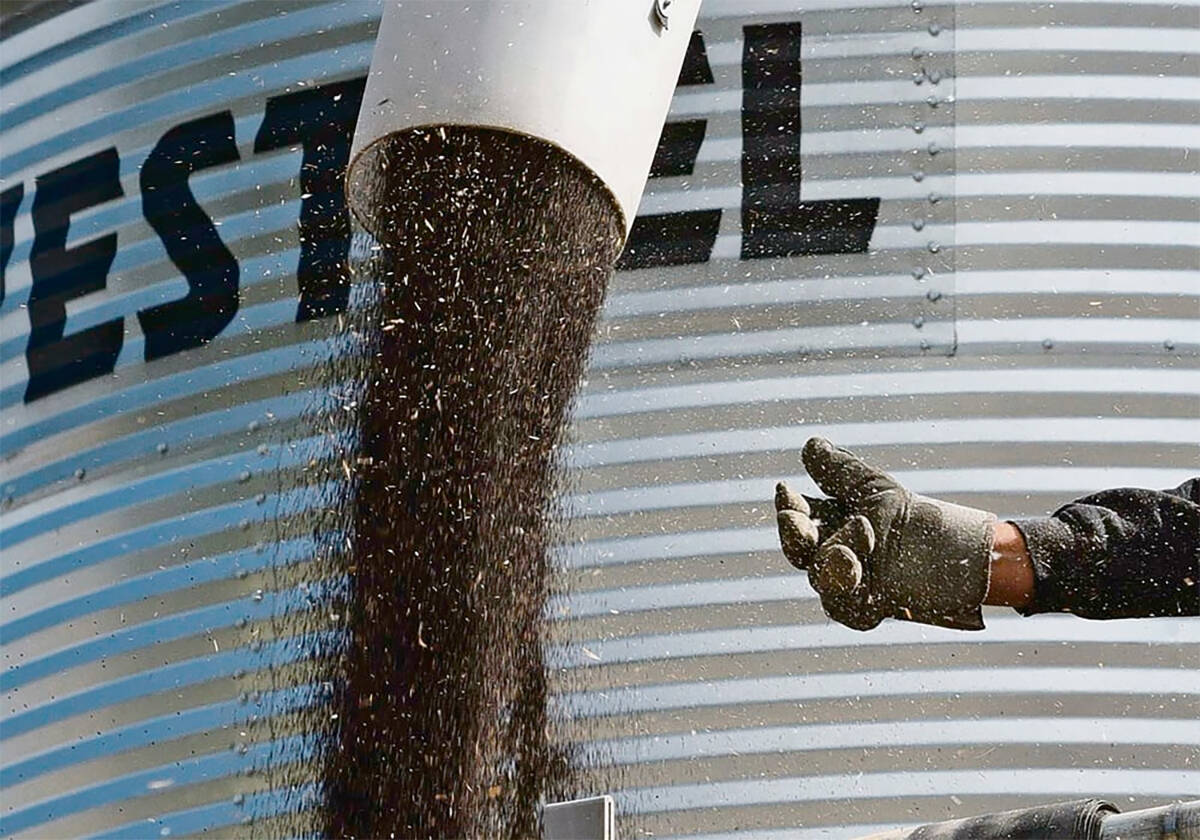RED DEER — Late blight in potatoes is an old scourge that is showing up as a super fungus.
The disease showed up in 2009, ruining potato and tomato crops, said Agriculture Canada researcher Larry Kawchuk of Lethbridge.
“In the field you would sometimes see in dry climates, like Alberta, the disease appear and dry out during the hot sunny day time, but during the evening when the temperatures would go down and the humidity levels rose, you see it move 10 metres overnight,” he told Potato Growers of Alberta’s annual meeting held in Red Deer Nov. 18-19.
Read Also

Farmers urged to be grain-safe this fall
Working around grain bins comes with risk, from farmers falling to drowning in grain: Experts have five tips to help avoid grain-related accidents this harvest.
“It was behaving badly and differently, so we knew something was up.”
Researchers have been collecting samples across Canada since 2010 and have found new strains that were the result of fungal types mating.
The US 8 strain dominated Canada and the United States in the 1980s and 1990s, but this new pattern of diseases may affect plants differently and develop resistance to common fungicides quickly.
The US 23 strain, which was first seen in Florida and Alabama, appeared in British Columbia and Manitoba. Alberta got the US 24 type and an old type called US 11 was found in the Edmonton and Red Deer regions.
“It probably originated in an heirloom variety somebody was growing in their backyard and it was carried over each year,” Kawchuk said.
The US 23 type also appeared in Alberta, where it survived in hot dry temperatures of 32 to 33 C. Cool, damp nights can revive it, and fungicide treatments may work well only once.
Mating types were also found, and the result could be a new fungus with different characteristics.
“Because of the two mating types, we started to see recombinant or new strains emerging in Ontario,” he said.
“The reason you don’t want the two strains of late blight getting together as has occurred in B.C. and Ontario is that instead of being asexual or clones of the same thing, you end up with mating sexual recombination and you don’t know what you are going to get out of that cross.”
Kawchuk said growers must work to control late blight before it is a threat.
Some late blights can survive a long time in the soil. Alberta mandated a rule to get rid of cull potato piles so the disease could not linger. Backyard gardeners also need to be aware of the problem.
Growers should follow best management practices and avoid getting seed from regions where disease has been found. Samples can be diagnosed at Agriculture Canada’s Lethbridge research centre, where the exact type of blight can be determined.















